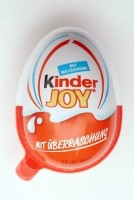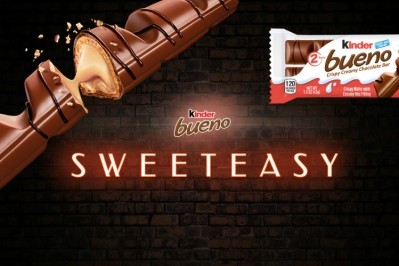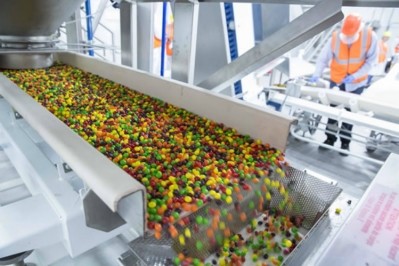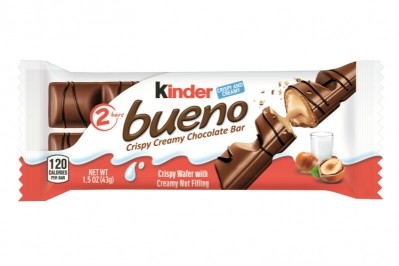Insights
M&M’s and Kinder take top two spots in IRI’s Pacesetters report
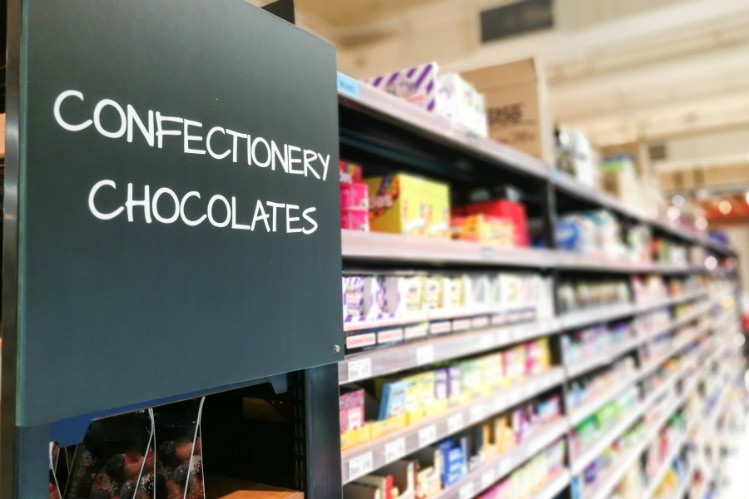
Kinder’s collectible toy egg, Kinder Joy, took the top spot with $124.4m in first-year US sales – but not after a ‘horse race’ with M&M’s Caramel through the last leg, said Larry Levin, executive VP of marketing and shopper intelligence at IRI.
“People didn’t just buy one,” he said, noting that shoppers opted for two or three at a time. “The appeal of the product obviously went to younger families, but it also went to grandparents.”
According to the firm’s data, the ‘possible penetration’ of chocolate novelty candies sat around 1.5% of US households, or 1.8m. By December 2018, precisely one year after Kinder launched the popular treat stateside, household penetration had topped 16%.
In fact, Kinder Joy contributed to nearly 70% of total growth in the confection space, said Levin.
Kinder excelled in selling the product on both merit and excitement, especially in marketing collaborations with Disney’s Frozen and Star Wars.
“The desire to drive everyday consumption of chocolate is coming through loud and clear with growth,” Levin continued, with Hershey’s Gold bar missing the Top 10 by two slots.
Big brands hit dollars but not share
Mars Wrigley has been busy experimenting with new flavors in the past decade, but the confectioner landed big with its caramel M&M’s in 2018: sales neared $121m.
These M&M’s and Kinder Joy were two of only four products in IRI’s Pacesetters report to surpass $100m in sales. (To be considered for the report, products must be brand-new or an extension of an existing brand with 30% distribution. IRI then measures the following 13 months after launch.)
In the past, major CPG companies dominated the new product landscape, but these days, “small companies are acting fast, but they’re also acting with purpose,” said Joan Driggs, VP of content at thought leadership at IRI.
In 2018, small companies accounted for nearly three-quarters of the Pacesetter products, though their sales nowhere near match those of the big players.
“Small companies might have more products on the list, but big companies have secured a majority of sales,” said Driggs, noting that the latter accounted for only 22% of products by count but 54% of sales dollars.
Who is losing, she noted, are the mid-tier companies, whom she believes need to step up their development game.
According to IRI, since 2013, $20bn of sales have moved from large and medium-sized companies to smaller names and private label manufacturing.
“Frankly, there’s no reason that mid-size companies can’t be generating more of this innovation,” said Driggs.
The rest of the Top 10
Yoplait’s Oui fruit-on-the-bottom yogurt line came in third with $100.5m in sales. The other six products did not surpass $100m, ranging from Gatorade Flow’s $78m to $48m for Duncan Hines’ ‘Perfect Size for 1’ line of baking mixes, hot cereal and dessert toppings.
Chicago-based RxBar came in fifth at $74m, while Lay’s Poppables reached $51.6m and Ritz’s Crisp & Thins (from Mondelēz) hit $49m.
Indulgence amid health and convenience
All-natural, clean-label and limited ingredient products enjoyed growth again last year, according to the report, but convenience products continue to gain steam: two-thirds of consumers reporting that they buy new products because they are convenient.
“Consumers are looking for convenience and products that play multiple uses,” said Levin. “If they don’t have these attributes, they will walk away.”
Nonetheless, they are simultaneously seeking ‘experiential, memorable and positive experiences’ – things that are ‘indulgent, sensorial and exciting.’
“People are rewarding themselves with small indulgences,” noted Driggs.
Indulgent treats tracked by IRI sold $800m in their first year. Driggs attributed that scope to the fact that 75% of consumers the firm surveyed say they ‘balance health and wellness with indulgence.’
She also pointed out the success of Tic Tac Gum, Reese’s Crunchers and Haribo Starmix, as well as Godiva’s chocolate pudding mix and Hostess’ Petites.
Innovation, however, can be tricky – 90% of launches ‘fail to meet critical milestones,’ according to Driggs. Companies must maintain consistent messaging that highlights a product’s merits and ensure availability that meets consumer demand.
